I often see posts in the various adoption groups I am in where parents are looking for suggestions for favorite adoption themed books for their waiting or newly home children. While in process for our first daughter to come home from China, we received a list of children’s books that addressed adoption during one of our training sessions. When we got home I hopped online and immediately ordered all of them and justified it as retail therapy. Even though many of those books became favorites, shortly after our daughter came home I realized there was a valuable tool missing from our library… her story.
When I talk about lifebooks with friends who have adopted the general consensus is that they realize what a valuable tool they can be in helping their child heal and embrace their story, but they are overwhelmed and do not know where to start.
Some families feel like they do not have enough information to compile a meaningful book for their child.
Others feel overwhelmed with the amount of information they have.
And some may have adopted an older child and feel like they already know their story and it is too late to document it.
What may be the hardest part of writing a lifebook is that as parents we want our children’s stories to be happy ones. It is hard to face and document a story that is based on loss and early childhood trauma but every child has the right to their story. It is validation that their life and their story matters. Biological children have baby books, our adopted children have their version: a lifebook.
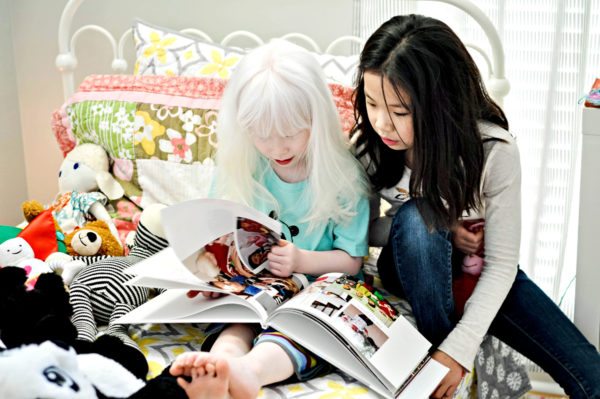
The easiest way to start planning on how you will document your child’s story is to look at what a lifebook is and what it is not. First and foremost, a lifebook is the true story of your child before you met them. It starts with your child’s birth, it addresses their birthmother and birthfather, where they were born, circumstances surrounding how they became available for adoption, and is not embellished with details that do not exist.
The desire to soften or embellish hard details might arise, but we would be doing our children a disservice by not presenting their true story. A factual documentation of their story will build trust. Storytelling is an important part of families and their histories. A lifebook gives you the opportunity to be the storyteller and give your child their history.
A lifebook is a way to normalize adoption language. Before we became adoptive parents were words like “birthmother and birthfather”, “orphanage”, “foster parents” or “abandonment” a part of our daily vocabulary? Because they have lifebooks, and because we as their parents are comfortable with the “hard” words surrounding their lives before we met, the stigma of those words has been removed for my girls. We frequently hear the words orphanage, abandoned, and birthmother in our home as part of daily conversation. If your children don’t hear these words and details from you in a loving way, they may hear them from others in a way that is meant to be hurtful. Normalizing these words for your child is important and builds trust.
A lifebook is structured in a way to address difficult adoption topics. It gives you a script and allows you to become comfortable relaying your child’s story. If we aren’t comfortable with our children’s story, how can we expect them to be? Not presenting them with the details of their life before you met might lead them to believe there is shame in it.
A lifebook is uncluttered, easy to read, and easy for your child to hold. The pictures you include grab and hold your child’s attention and support their story. Create the book in a format that is easy for your child to hold and flip through. Imagine your child in your lap as you look through the book together.
Lifebooks can be created in digital format through companies like Shutterfly or Blurb (or whoever has a good coupon!) or they can be created like a traditional scrapbook. There is no right or wrong way to create a lifebook, just remember to only use copies of pictures and documents and not originals.
Quite simply, a lifebook is a gift to your child. Even if they don’t initially show interest in it, revisit it, and leave it where it is accessible. Follow your child’s lead, but do not assume that because they are not asking questions or talking about their past that they are not processing their story.
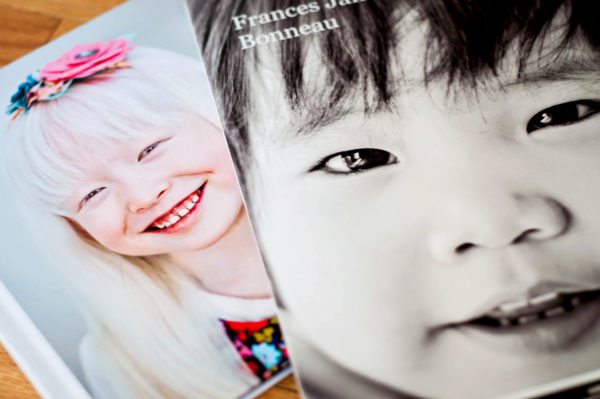
One of my girls immediately embraced her lifebook. She carried it everywhere, asked me to read it over and over, and even slept with it for months. We are on our second printing of it as the first became well worn. My second daughter only showed mild interest in her lifebook. She knows where it is in her room and every so often I will pull it out and ask if she wants to look through it. Even though she has not shown the same level of interest, she is as comfortable with her story as her older sister, they have needed and used their books in different ways.
It is also important to look at what a lifebook is not. A lifebook is not a scrapbook of your feelings and memories of your child’s adoption process. In addition to lifebooks, both of my girls have separate scrapbook albums with the pictures from our trips to meet them. A lifebook isn’t going to contain airline tickets and other ephemera and it isn’t going to discuss how you felt during the adoption process.
Maybe this makes you breathe a sigh of relief as all of the “stuff” you thought you needed to include in their lifebook can be saved for another album. This may also make you panic a little as maybe your child came to you with very little information and now you feel like you don’t have enough to complete a lifebook. I will share ideas later in this post on how to supplement a lifebook where you have very little information as that was the case for one of my daughters.
It is not a book to be shared with casual acquaintances. Your child’s lifebook contains information that is personal and private. It is important to ensure that they know that private does not imply that their story is something to be ashamed of, it is private in the sense that it is to be shared with family. You could complete two lifebooks, one that is a version that stays at home and a version that can be shared with friends and extended family. Both of my girls have asked to bring their books to school but we compromised and they got to pick whatever pictures they wanted to take in from their travel albums and were happy with that.
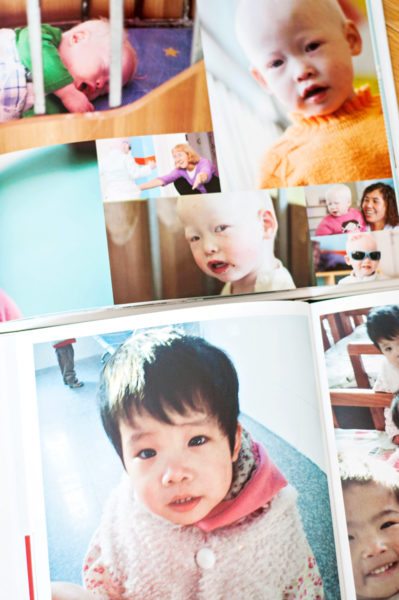
Your child’s story is not embellished and details are not omitted to hide hard truths. In both of my girl’s cases we have an estimated date of birth and a vague abandonment location. With so little to go on it would be easy to want to add to their stories to give them more information and to soften the reality of not knowing their exact birth date or finding place. It is tempting to use phrasing such as “your birthmother loved you so much that she left you in a public location so that you would be found quickly”. I cannot put that in writing as I do not know it to be 100% true. We don’t know if it was the birthmother who left our girls, we don’t know if it was an act of love, desperation, or otherwise. Using phrasing such as “your paperwork from China states that you were born on…” and “your abandonment certificate lists ____ as your finding location” lets you include what information you have without stating it is a known truth.
An exception to this would be if your child was found with a note and you could then include that information. When my girls and I sit and read their lifebooks together it is natural for them to question and create different scenarios as to what may have happened in those early days where there is little to no information. We encourage them to ask questions even though our answer may be “I wish I knew but I don’t.” We lead them to explore their questions framed by “I imagine”. For example they might say, “I imagine my birthmother left me at the civil affairs office because she knew someone would find a baby there” or “I imagine she had thick, brown hair like me”, “I imagine she loved me and wanted to take care of me but couldn’t because I was very sick” etc. How they interpret their story will change as they grow and mature and having a stable foundation of an accurate lifebook will give them a foundation for that interpretation.
A lifebook does not have to be a certain number of pages. It doesn’t have to have a certain number of pictures. It can be created on a computer or written by hand. It can be a bound book or a scrapbook style album. Done is more important than perfect. One of my second daughter’s favorite things she has from China is a lifebook from her time with her foster family. The book is simply pictures glued to construction paper with stickers and handwritten captions and she loves it. Not because of the format but because someone took the time to document her story.
Since I have written a book for a child with very little information, and one with an abundance of information, I will share some ideas on how to work with what you have or don’t have. We adopted our first daughter in 2011 at the age of 3 1/2. When we received her referral her file was comprised of 3 pictures and an incomplete medical file. As part of her care package we sent a disposable camera and on our family day we received 10 pictures of her all taken the same day along with her finding ad.
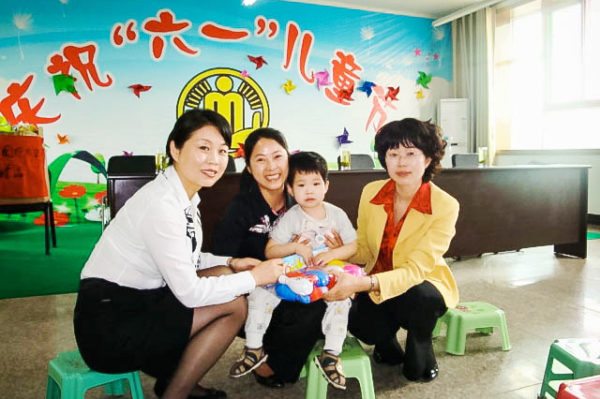
Armed with so little, it would have been easy to think I didn’t have enough information to compile a lifebook for her, but by digging into the internet and getting creative, I was able to complete her book. One of the first things I did was look for pictures of her and her orphanage on Baidu.com and Baidu image search. Baidu is a Chinese search engine similar to Google. When viewing it in Chrome, the pages will be translated from Chinese to English and with a little digging you may be able to find information on your child. I was able to find several pictures of our daughter at the orphanage which are priceless!
One of the first things to check would be to see if your child’s orphanage has a website. It turns out hers did and I found a couple of pictures of her on it as well as exterior and interior pictures of the orphanage I was able to use in her lifebook. I then searched her orphanage name along with words and phrases like “Children’s Day”, “Lunar New Year” and “Mid Autumn Festival” with the years that she was there. The media may cover events and pictures may be taken and published around the different holidays as that is when people may visit and make donations to the orphanage. I was able to find a couple of pictures of her in the arms of visitors to the orphanage who had made donations of supplies.
Finding ads may possibly be found this way with information you have in your child’s referral like their date of birth, date of abandonment, name of orphanage along with words like “tracing notice” or “seeking notice”. Wunderground.com is another site that is helpful. You can look up the weather history for the day your child was born, abandoned, etc. With the information I found I was able to include in her book that temperatures reached 80 degrees during the day and 64 degrees at night on the day that her file says she was born.
Through a contact I made on Facebook I was able to track down a young lady who had lived at our daughter’s orphanage for many years. When I reached out to her she surprised me with several pictures of herself with our daughter that I could now include that in her book along with first hand information she gave us.
Other ways that I was able to create a substantial book for her were to include a page about her province, a page about her Chinese zodiac sign, and a page about her orphanage with pictures I found online since we didn’t get to visit. I also made several of the pictures full-page pictures so as to fill more space.
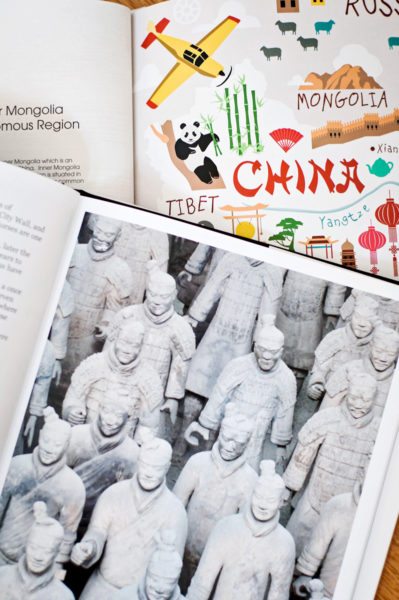
For our second daughter, I had more information than I knew what to do with. I found pictures on her orphanage’s website, we had close to 1000 pictures from her time in foster care, I had pages and pages of progress reports from her time in school, a scrapbook from her time in foster care, and baby pictures from someone who had worked in her orphanage. My challenge was culling the amount of information I had to make it manageable to work with. The way I approached it was to outline the content of her book and pick pictures to support her story. Where in DD #1’s album I used full page pictures, in DD #2’s I included several pictures on most pages. I used an outline similar to this for each girl’s book.
– Page(s) about their birth and abandonment with information found in their Chinese birth certificate and abandonment certificate. I also included information on finding ads and what they are along with copies of their finding ads. Their special needs are also mentioned in this section.
– Page(s) about their orphanage with pictures.
– Page(s) with pictures from their time in the orphanage along with any names/ information available.
– For our second daughter I included a few pages for her time in foster care, explained what a foster family’s role is, and included pages for her time in school.
– Page(s) with Chinese zodiac sign and meaning.
– Page(s) about their province and what it is known for. Used pictures taken on our trip and found on-line.
– Page(s) about Chinese holidays.
– I included copies of both girls’ English translations of medical files. You could also include copies of Chinese birth certificate and abandonment certificate
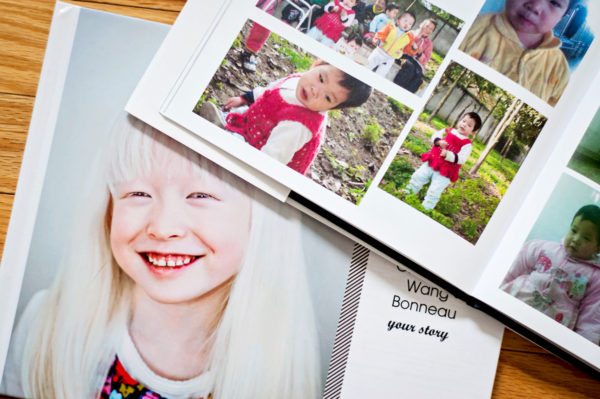
Since the first page and the beginning of your child’s story can often be the most difficult to write, I am sharing a page similar to what I wrote for my two girls (dates and other information have been changed to protect their privacy). Seeing how others wrote and completed their lifebooks was helpful when I was working on my first book. You can choose to write your child’s book in age appropriate language, or to write it as I have done and read it to them in an age appropriate way.
If you write a version for a younger child, you may want to revise it as the child grows so that it holds their interest. You may also consider having an older child participate in writing their lifebook.
Example Page:
“Your story begins on Sunday, January 1, 2000 in Shanxi Province, China. It was a cold and windy day with temperatures falling below freezing. Your Chinese birth certificate notes that you were born on January 1, but that your exact place of birth is unknown. We imagine that your birth parents were very surprised when they first saw their beautiful blonde haired, blue eyed daughter! Although your birth mother probably has dark hair and dark eyes, we imagine that she is beautiful just like you. We believe she kept you as long as she could and that she remembers you and thinks of you often.
For reasons that we may never know, someone made the decision on or around Sunday June 1, 2000 to leave you at the corner of XYZ Road in ABC Village. Being that it was summer time, the temperature was a warm 85 degrees that day with a light breeze. Your finding ad mentions that you were left with a note on red paper and were wrapped in a white blanket. When you were found by a gentleman named Mr. Citizen, police officers from the ABC Police station were called and they brought you to 123 Orphanage on the same day.
A finding ad was published and a 3 month search was conducted for your birth parents but they could not be located. Your finding ad is precious to us as it is the only baby picture we have of you. In your baby picture you are wrapped up in a Pleasant Goat blanket and have a sweet smile on your face. You were in someone’s care for 6 months before the decision was made to abandon you on that summer day in June.
Sometimes adults have to make very hard decisions, and we imagine the decision to abandon you was a very difficult one. All too often, children with albinism in China are abandoned because albinism is still misunderstood in many parts of the country. People with albinism are sometimes thought to be a curse and that they will bring bad luck to their families. Of course we know this is not true, but long held beliefs are sometimes deeply ingrained in a culture.”
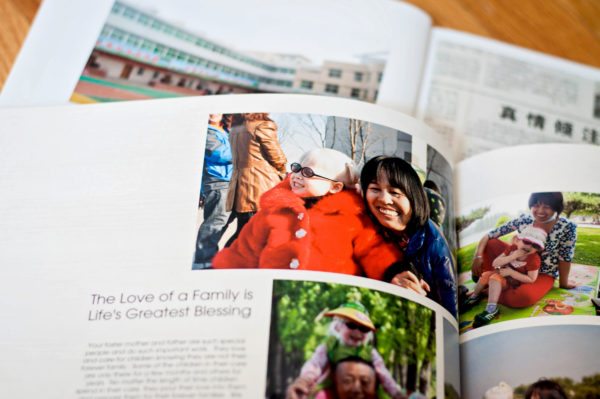
Resources:
Baidu.com
Wunderground.com
Adoptionlifebooks.com
Facebook – there are FB groups for many provinces and orphanages where information can be found and shared
Before You Were Mine by Susan TeBoss and Carissa Woodwyk
Lifebooks Creating a Treasure for the Adopted Child by Beth O’Malley
– guest post by Martha

























This is very helpful. Thank you for writing this article.
When did you introduce the photo books to your daughters? I know it may not be good to do too early (in case it brings up negative memories for a child who is still adjusting to their new home/reality), but I recognize that you don’t want to wait too long. I appreciate any advice on this! Thanks! 🙂
Just found you! Our Ben is now 45 years old, adopted from Vietnam. Looking Forward to re-constructing our story on this site